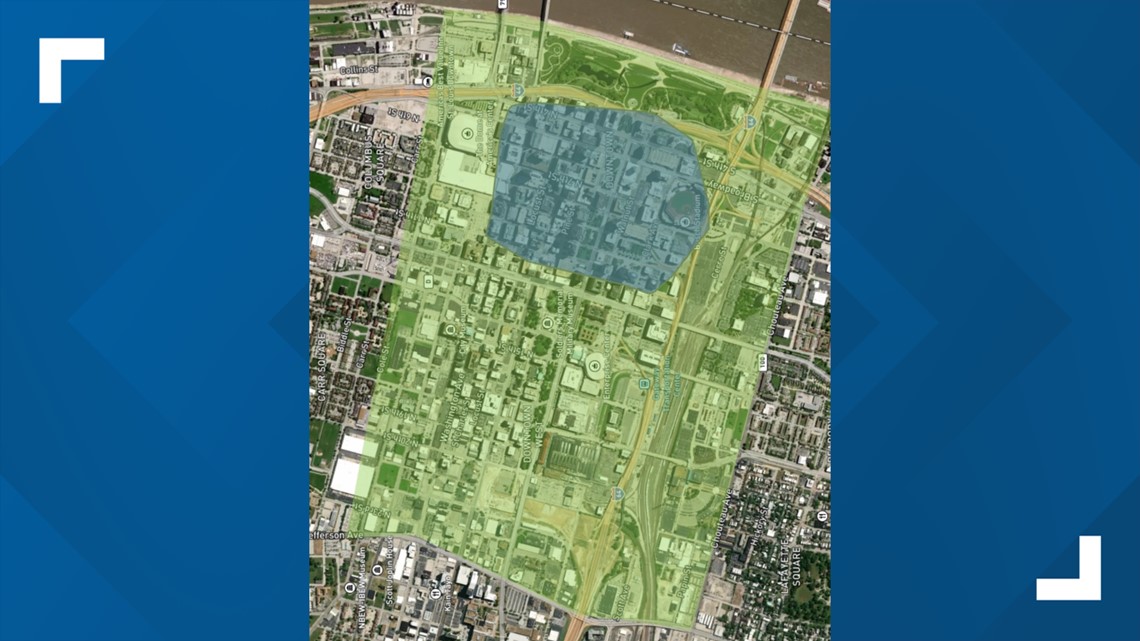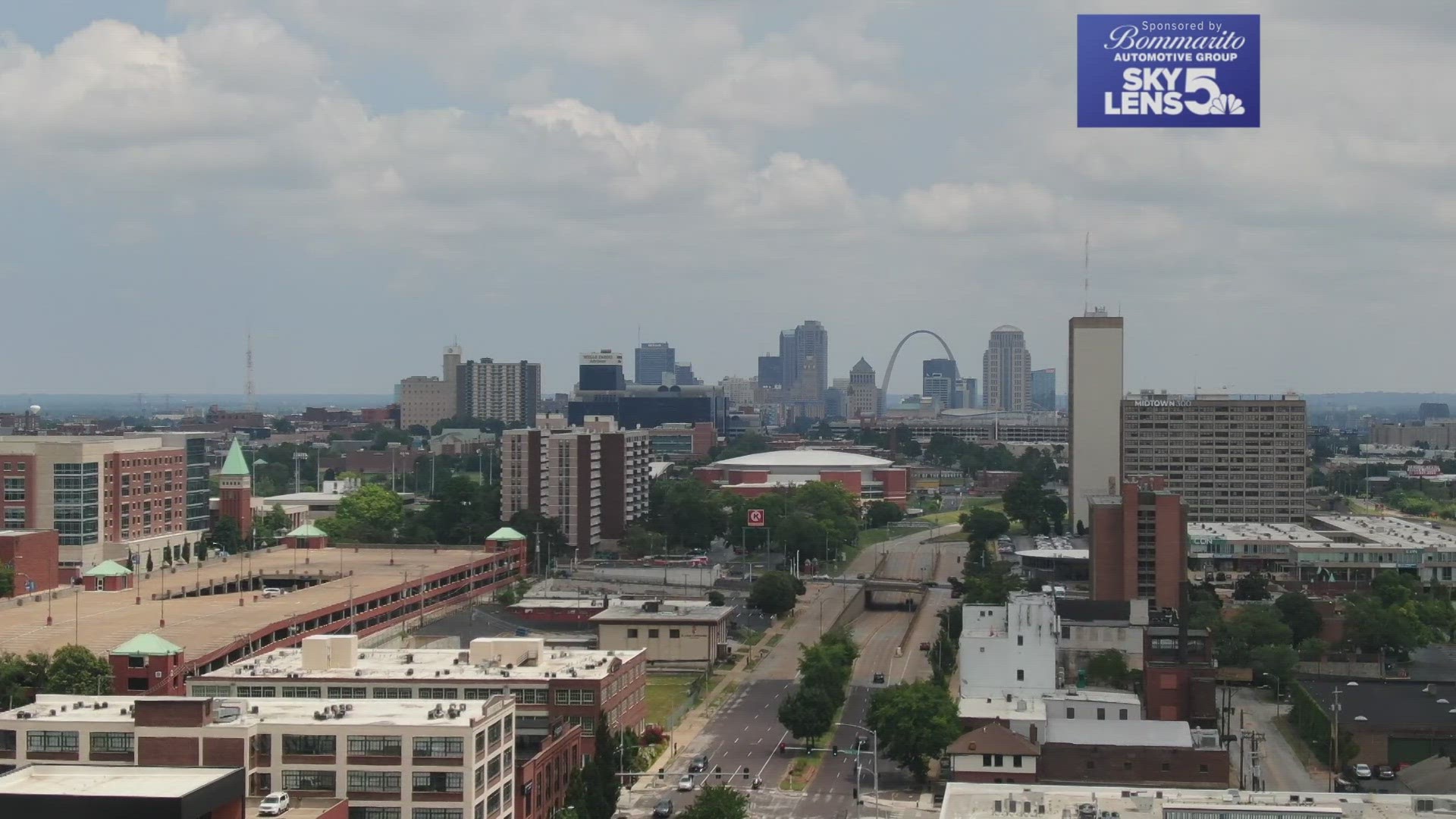ST. LOUIS — In a front-page piece published this week, The Wall Street Journal called downtown St. Louis' real estate a "nightmare," pointing to its many vacant buildings.
The report painted downtown as an empty office district with "boarded up towers, copper thieves and failing retail" and said the city is "desperately trying to reverse the 'doom loop.'"
Critics of the piece said the report doesn't show the entire picture, but they also didn't shy from admitting that more work should be done to revitalize downtown.
"The most damaging part of the recent (article) published in the Wall Street Journal is that it is largely accurate," Citizens for a Greater Downtown St. Louis said in a statement. "The conditions that the article describes echo exactly what our group has been warning about for nearly six years, long before the pandemic accelerated the decline of our downtown."
The association argued that downtown was "not a victim of external forces as some may claim – it is a product of indifference, inattention, ego, hubris, and just plain incompetence by city government, the civic community, and by a few predatory and venal property owners."
Some critics have pointed to the data used by the study, saying it doesn't take the entirety of the downtown area into account.
Downtown resident Denis Beganovic used to work for the City of St. Louis' building division, traffic division, MODOT, and three federal contracting organizations, some of which worked on city projects. He also served on the St. Louis Board of Adjustment. He currently serves on a few committees for the city and board of aldermen.
Beganovic is well-connected with the problems and positivities of downtown.
He said last month, he showed the Wall Street Journal reporter around the city. They spent a couple of hours walking around downtown as Beganovic pointed out developments in the real estate landscape.
"It was kind of eye opening for him, especially Downtown West, when it comes to development," Beganovic said.
Once the article was released, Beganovic said he realized more should've been shared.
"The data that the journal uses doesn't count what happens at the (Gateway Arch), which has its highest visitor total in a decade, the Convention Center, everything in Downtown West -- Tucker to Jefferson, to (CITYPARK) stadium, City Hall, Union Station, City Museum -- all these things aren't part of the data," Beganovic said.
The article touched on the historic Railway Exchange Building vacancy and the recently purchased AT&T Tower. It also focused on empty storefronts, the pandemic pitfall and a big drop in foot traffic, citing a study from the University of Toronto.
In response, Greater St. Louis, Inc. shared an image showing the university's definition of downtown.
The organization said it believed the data on economic recovery cited in the piece used the smaller blue portion of downtown, while the actual definition is the light green area.


"We see 80% return of foot traffic downtown after the pandemic that's different from what the WSJ portrays," said Kurt Weigle, senior vice president and chief downtown officer with Greater St. Louis, Inc. "A lot of this that was pointed in the article, we knew we've been working on and we're starting to make some progress on."
Weigle noted their organization is working with a potential development team and local and national experts to develop a program of uses and a financing strategy for Railway Exchange Building.
Beyond that, he explained just this past weekend, downtown saw more than 100,000 visitors for a variety of sports and entertainment events.
UKRAFT owner Matt Ratz told 5 On Your Side their restaurant opened downtown in 2020.
"You can expect us to get an average of 200 to 300 people every lunch Monday through Friday. Our revenue is up and we’re looking to expand here shortly. We’re looking to invest in downtown St. Louis and be an anchor of the thriving part of that," Ratz shared.
Everyone admitted that something needed to be done and it'll need to take multiple players to keep the momentum.
"We need the entire region behind downtown because that's how we are shown to the world," Beganovic said. "Our region is judged by how well downtown is doing. It doesn’t matter how nice Chesterfield or Ballwin or St. Charles is, your impression of St. Louis is going to be downtown, so our business community needs to take more pride into that and start investing because this is what we’re judged on."
Downtown is a part of St. Louis Alderman Rasheen Aldridge's ward.
Aldridge shared this:
"The decline of downtown over the years has had a negative impact on the local and national image of the city. However, I am hopeful that the trend for downtown is soon on the upswing. With Greater St. Louis Inc offering new incentives for small businesses, the return of the BattleHawks and the championship game coming to St. Louis, the new building of the Convention Center, and the recent sale of the AT&T building, I believe brighter days are ahead for Downtown."
St. Louis Mayor Tishaura Jones shared this statement:
“I am optimistic about the future of our city and confident in my administration’s ability to continue our focused revitalization of Downtown,” said Mayor Tishaura O. Jones. “From law firms to tech startups, retail and restaurants, Downtown St. Louis has caught the eye of businesses from all backgrounds, cultures, and sectors. Through partnerships with Greater St. Louis, Inc. and the St. Louis Development Corporation, the City of St. Louis is building toward a day in the not-too-distant future when Downtown serves as a cultural beacon for our entire region.”
The full statement from Greater St. Louis, Inc.:
“We are all acutely aware of the challenges our Downtown faces. This is why ‘Restoring the Core’ of the City of St. Louis, as identified in the STL 2030 Jobs Plan, is a top priority of the business community. We are working on these issues every single day.
“Let’s be clear: the St. Louis metro will not grow without a strong Downtown. The complex challenges we confront in Downtown did not appear overnight, and they will not be fixed overnight.
“But rather than adopt the dramatic, pessimistic tone in the article, the St. Louis region’s civic-minded business community is rallying to address these challenges head on. While there is much work to do, we are making and seeing progress and will continue our work, day in and day out, to make Downtown the world-class neighborhood at the heart of our world-class metro.”

